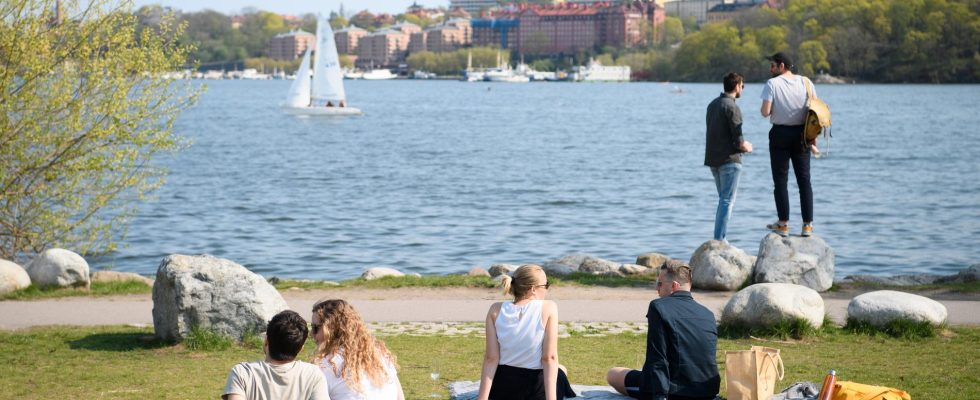unsaveSave
expand-left
fullscreenThe long-awaited spring attracts many to enjoy the warmth of the sun. But we often forget that the sun’s rays are strong. Archive image. Photo: Henrik Montgomery/TT
After a long and in parts of the country sun-poor winter, spring has finally made its entrance. How should one think about being out in the long-awaited spring sun?
Doctor and PhD student Marta Laskowski answers questions about the sun and sun protection.
Is the spring sun extra strong or is our skin more sensitive at this time of year?
– There will be a transition from winter where the so-called UV index is quite low and then it increases in spring. It is clear that we get very happy and expose ourselves more when the sun comes out. But we forget that the sun’s rays are strong, says Marta Laskowski, ST doctor in dermatology and venereal diseases at Sahlgrenska University Hospital and PhD student at Sahlgrenska Academy.
How long it is possible to stay in the sun without a sun protection factor is individual and depends, among other things, on skin type and UV index. But it is often less than you think, according to Laskowski.
The UV index is a value that tells how strong the sun’s harmful UV radiation is. On the Radiation Safety Authority’s website, you can see the current UV index and calculate approximately how long you can stay in the sun without burning.
Seven teaspoons
Sunscreen should be used already now – from spring to autumn – but it should primarily be seen as a supplement.
– In the first place, it is recommended that you protect yourself by not being in direct sunlight between 11 am and 3 pm during the day. Then it’s about wearing covering clothes and preferably a hat. On the parts that cannot be protected, such as the hands, sunscreen is recommended.
Which sun protection factor should one use?
– Sun protection factor 50 for the face and at least 30 for the body. But people generally lubricate themselves far too little and too rarely. You should reapply every two hours and after swimming – even if the sunscreen is water resistant. About seven teaspoons are needed for a full-body spread.
All sunscreens protect against UVB radiation, but as a consumer you should make sure that the sunscreen also protects against UVA radiation. It is often indicated with a round ring around the letters “UVA” on the bottle.
DNA damage
If you pick up your sunscreens from last year – do they still protect?
– The manufacturers say that the shelf life is one year. There are no studies on whether it lasts longer, so you have to go by what is written on the bottle.
That it is fine to sunbathe as long as you don’t burn yourself is a myth. Laskowski points out that even if you only get a tan, DNA damage occurs in the skin.
In her profession, she meets patients who say they never sunbathe. But even if you are not lying on the beach, you are exposed to the sun, for example when gardening or on the golf course.
– All passive sunbathing also counts.
FACT Skin cancer
Every year, nearly 12,000 people in Sweden are affected by a serious form of skin cancer.
About 4,200 people get malignant melanoma. Of these, 500 people die each year.
A further 7,500 people are affected and 100 people die annually from other skin cancers, mainly squamous cell carcinoma.
In addition to this, each year 35,000–40,000 people get the milder form of skin cancer, basal cell cancer.
For all forms of skin cancer, the sun’s UV rays are the major risk factor.
Malignant melanoma and other forms of skin cancer have increased sharply in recent decades.
Source: Cancer Foundation
Read more
